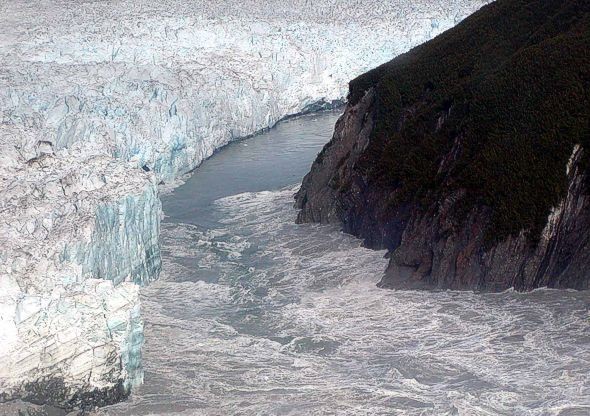Alaska-Pacific RFC
River Forecast Center
Jökulhlaups are outburst floods caused by the rapid release of water from a glacier dammed lake. Glacier dammed lakes are formed when a glacier blocks the flow of water out of a tributary valley. Throughout the seasons rainfall, rainfall runoff, snowfall, snow melt and glacier melt all accumulate in the lake. At a semi-regular interval, which differs for each lake, the lake begins a self-dumping process. This process begins when the lake floats the glacier or as a fracture in the blocking glacier begins to release water. As the water flows through the opening it is enlarged by melting due to the heat created by the potential energy of the flowing water. After the water has drained, the opening begins to close off and the lake begins to fill again
Numerous glacier dammed lakes exist in Alaska. Snow and Skilak Glacier lakes are familiar to those along the Snow and Kenai River due to the flooding or high water levels which can occur after the lake releases. Visit the link below for additional information regarding Alaskan glacial dammed lakes.
To view the information page for a Glacial Dammed Lake, click the map icon to display the link or select it from the dropdown list.

Post, A., & Mayo, R. L. (1971). Glacier dammed lakes and outbursts floods in Alaska. USGS Hydrologic investigations atlas ; HA-455
US Dept of Commerce
National Oceanic and Atmospheric Administration
National Weather Service
Alaska-Pacific RFC
Alaska-Pacific River Forecast Center
6930 Sand Lake Road
Anchorage, AK 99502
907-266-5160
Comments? Questions? Please Contact Us.

